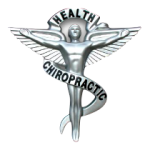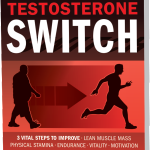Every day chiropractors hear patients tell a story that sound something like this:
“Hey, Doc, all I did was bend over to brush my teeth and it felt like I got kicked by a mule. Now I can’t straighten up, can hardly move, it hurts like heck. And on top of that, I feel like the world is caving in on me and I am all out of control and can’t do anything about anything! I mean, I can usually take it. I’m not a wimp, I can take pain. But I can’t figure out why this thing has me so upset I can hardly think straight, I am an emotional wreck. What’s going on with me?”
When one of my patients tells me some variation of this scenario, I know that the most important thing I can do is to spend a few minutes with them and explain what has happened and why they are having such a surprising emotional reaction. This is especially important if it happens to be a big macho guy who is embarrassed to death because of the tears in his eyes.
I explain that the low back and pelvis is the foundation of your body. Your strength and ability to walk, run, work and defend yourself is dependent upon the strength of that foundation.
If it is knocked out from under you or even knocked out of balance it can make you emotionally out of balance too. Here’s why:
On a subconscious primitive survival level, when our basic physical foundational support fails us it can cause us to feel weak, helpless and frightened. That translates into anxiety and even depression if it goes on for very long.
When we feel weakened, vulnerable and fearful, it is natural for us to be withdrawn and contracted. We tend to shy away from many of the things we normally can do easily, and totally reject taking on anything new or challenging.
These are common emotional reactions to injury and pain especially of the lower back and pelvis (sacro iliac). There are many great examples I could tell you about to further illustrate this point, but since this is being published in Gary Scott’s newsletter, he suggested that I write about his recent experience.
As you all know, Gary is a financial expert, writer and teacher. Although he is physically strong and in good shape, his profession and lifestyle has not required him to do a lot of strenuous physical work. That is until recently, when he and Merri bought several houses in Mount Dora, Florida, which they plan to keep as rentals.
Since several of the houses needed some sprucing up, Gary pitched in to help his property manager Derek with all kinds of handyman chores, including moving heavy furniture.
Being unused to a steady diet of this kind of work caused Gary to sprain and strain his sacroiliac joints and throw his whole lower back and pelvis out of balance. The pain made him uncomfortable, but it was not terrible. What he did not expect nor did he at first understand was how it affected his emotions.
Gary went from being expansive, enthusiastic and optimistic to withdrawn, pensive and pessimistic. Merri was of course the first to see this change in his personality, followed by Derek who had been working side by side with him.
After putting up with the pain for a few days hoping it would go away, Gary called asking me to see him for an adjustment in my new office in Mount Dora.
I was able to quickly diagnose the problem and make a correction to fix it, but Gary did not mention to me how emotionally down he had been feeling. It wasn’t until the next day when Merri called to tell me how much better Gary was feeling that I found out he had been suffering emotional contraction with his sacroiliac slippage and pelvic imbalance. Merri reported that Gary’s back and hip pain was gone. No big surprise, they expected me to take care of that. What they didn’t anticipate was the complete turn about that occurred in his emotional picture. Merri told me that after his session with me Gary went from being fearful, depressed and wanting to withdraw the offers he had made on two more houses, right back to being his normal positive “can do” self! Both Merri and Derek saw the immediate change in him. Derek even commented on it to Merri, calling her attention to Gary happily whistling as he painted in the next room.
Gary, who has a very popular Investment Newsletter and Seminar business, was so enthusiastic about the results that he asked me to write about it for his subscribers. You may read what Gary said on his blog at garyascott.com http://us1.campaign-archive2.com
So, what happened? They wanted to know. They found it all very curious and mysterious.
I explained it to them this way:
There is a correlation between pelvic imbalance resulting from sprain/strain injury and emotional distress. Specifically, when the sacroiliac joint is sprained and strained, there is alteration of the weight bearing ability of that joint and consequently of the overall body balance and stability. The severity of this condition ranges from mildly to severely painful. In its early stage it may only involve the sacroiliac joint, but with time and increased severity it can extend to all seven pelvic joints, causing widespread low back, pelvic and hip and leg pain.
Since the pelvis is the weight bearing foundation of the whole body, any imbalance or failure of this complex joint system will result in an overall loss of strength and stability of the entire musculoskeletal system.
On a primal emotional level this condition is subconsciously perceived as weakness, vulnerability, and an inability to defend and provide for ourselves and those who depend upon us. When this, our most basic support is taken from us, It causes stress on a deep emotional level. If this lasts for too long it can lead to anxiety and depression. Our ability to survive and thrive, in either a primitive or modern environment, is dependent on our strength and mobility.
On a neuro-physiological level, the pain and weakness associated with sacroiliac/pelvic injuries can cause a shift from our normal autonomic “rest and digest” state to the emergency “fight/flight” mode. This is a very uncomfortable state to be in for even a short period of time. But when it is prolonged it produces a severely stressful conflict between our need to protect ourselves and our ability to do so.
The physical pain associated with a sprain/strain injury to the pelvis can be excruciating, sometimes even greater than the pain of a herniated disc. The good news is that when the proper and precise chiropractic correction of the pelvis is made, this condition can be resolved quickly and efficiently.
It is always gratifying to see how quickly a patient can feel better with a renewed sense of wellbeing when pelvic function is restored. The speed with which this can happen cannot be explained by the reduction of pain alone, but by a shift out of the “fight/flight” mode back to our normal, relaxed, “rest and digest” state where we can look at our world more objectively.
While on this subject, I should point out that this is a two way street. What I have just described is known as a somato psychic reaction in which our physical state affects our emotional state. Conversely, our emotional state can also have a powerful physical affect known as a psycho somatic reaction.
Psycho somatic reactions are often mistakenly thought to be a form of neurotic behavior. It is frequently dismissed as being “All in your head.” But, psycho somatic reactions are very real and should not have a negative connotation.
Here is my favorite example of the power that emotions can exert over the physical body:
One summer afternoon in my Hamptons practice, I got a call from Mrs. G. one of my very wealthy patients. She asked me to make a house call to her ocean front estate to see her children’s Nanny who was incapacitated with severe back pain.
Mrs. G was very unhappy when I told her that I would not be able to get there until about 7:00 that evening when I finished seeing patients at my office.
When I arrived at the 10,000 sq. ft. summer cottage, I was greeted at the door by Mrs. G. who quickly escorted me to the children’s wing of the house where the Nanny’s bedroom was located.
I learned from Mrs. G. that the Nanny whose name was Ava, was 26 years old and had worked for her for about nine months and was a very good employee and loved by her children.
I found Ava lying in her bed and in obvious distress. When I tried to obtain the usual health history about medical conditions, medications, surgery or injuries, she was vague and provided little information as to what might have caused her back pain.
As soon as I began my examination, Ava began to convulse violently. Her eyes rolled back in her head she began sweating profusely as her body shook and her right arm contracted tightly against her body as her hand contracted into a tight fist. She appeared to be having a seizure or possibly worse yet a stroke.
I asked to speak with Mrs. G in the next room explaining that if she could not provide me with a good reason for Ava’s reaction, I would be forced to contact the EMTs and have her taken to the emergency room.
What Mrs. G. told me came right out of left field. She said that on the previous day Ava had returned from her vacation which she spent with her two year old daughter and estranged husband who lived in Israel. She went on to tell me that Ava’s husband is a terrorist living in a very dangerous part of Israel, but in spite of this, he has custody of their child. Ava of course was worried about her daughter and horribly distressed about being separated from her.
I went back to Ava’s bedside and told her that I knew about her daughter and that I understood why she was in such pain and distress. “What can we do to help you feel better?” I asked.
“I want to talk to my baby,” Ava replied in a barely audible whisper.
I then asked Mrs. G if she knew the husbands phone number. “Yes,” she said, “but I’m not waking up a terrorist. It’s the middle of the night in Israel,” she said. I told her “Don’t worry. I will speak with him first.”
I made the call and woke him up. To my surprise he proved to be a very nice terrorist. Very understanding of the situation and concerned about his wife. “The baby is asleep,” he said. “Let me speak to Ava.”
I gave the phone to Ava and held her hand as they spoke. Soon her tight fist and contracted arm relaxed. Within another few minutes she smiled and was obviously comforted by their conversation.
I was then able to proceed with examining and successfully treating Ava. The next day I visited her again and found her much better. The following day she was able to come to my office for a final treatment, and to wrap up what was one of my most bizarre cases ever.
What I had witnessed was the immobilizing effect of an extreme fight flight reaction triggered by what was for Ava, the overwhelming stress of her fear for her daughter’s safety and her detachment anxiety.
Had I not recognized what was really going on, Ava would have been hospitalized and subjected to a barrage of unnecessary tests and CAT scans which would have shown nothing, but would surely have exacerbated her condition.
Dr. William H. Koch 2016







 ther great book,
ther great book,